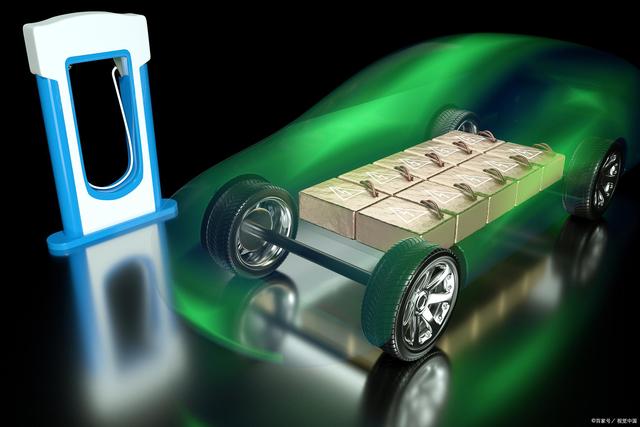Graphene has excellent composite properties. Although its downstream applications have not yet been industrialized, its potential application fields are very wide, such as composite materials, filters, energy storage, transistors, sensors, flexible transparent electrodes, etc.
Lightweight composite reinforcement
Graphene is the strongest substance known to man, comparable to single-walled carbon nanotubes, 20 times tougher than carbon fiber, and has extremely high tensile strength. In the field of transportation, especially in the aviation, aerospace and automotive industries, most applications require lightweight composite reinforcement materials. Substituting carbon composite materials for metal to achieve lightweight automobiles can effectively improve energy efficiency. In the process of replacing lightweight materials , graphene will play an important role.
The application of graphene in the field of lightweight composite reinforcing materials has two advantages: one is multilayer graphene oxide, which can be used as 3D printing material; the other is that 3D graphene or graphene aerogel can be synthesized on catalytic metal foam, which With a density of only 0.16g/cm3, it is the lightest material available.
However, compared with other materials, graphene, as a lightweight composite reinforcement material, also has limitations of high cost: fibers, nanowires and carbon nanotubes are easier to make composite materials with high performance and lower cost, and graphene nanoribbons have better performance. are excellent, but are currently difficult to prepare and expensive.
Biological sensor
A biosensor is an instrument that is sensitive to biological substances and converts its concentration into electrical signals for detection. It is an analysis tool or system composed of immobilized biosensitive materials as identification elements, with appropriate physical and chemical transducers and signal amplification devices.
Compared with carbon nanotubes, graphene is also an ideal biosensing material. It has the advantages of low cost, environmental friendliness, biocompatibility and uniform distribution of active groups of carbon nanotubes. , hydroxyl and other functional groups, graphene has good solubility, which is not available in carbon nanotubes.
However, compared with other inorganic 2D materials, graphene may still be slightly insufficient, such as carbon nanotubes, nanoparticles, nanowire-functionalized MEMS and semiconductor 2D materials, all of which have direct functionality and are highly sensitive. Much depends on the accepting material and medium.
Filter
There are two ways to filter graphene: one is to use the pore filtration of graphene film, because water purification and other filtration will bring high pressure, the filter medium needs to have greater strength, and synthetic graphene usually has fewer defects , can be regarded as an excellent filter medium. The second is to turn the edge of the film upward, so that the material can pass through the interlayer spacing between graphenes. This method is mainly used for seawater desalination, because the interlayer spacing of graphene is smaller than that of hydrated ions in seawater, and multi-layer graphene can be used. oxides to filter.
Filtration is required in many industries, including chemical separation, biological sample purification, seawater purification, etc. Because graphene has good barrier properties, adjustable nanopores, and controllable interlayer spacing, its application in the field of filters is very prominent.
However, compared with other materials, graphene still has some shortcomings. For example, the pore size of graphene and zeolite is similar, and zeolite has been used in pervaporation desalination, and the latest research has proved that zeolite can also be used for seawater desalination by reverse osmosis. In addition, the porosity of zeolite is more controllable than that of graphene.
DNA sequencing
The principle of graphene DNA sequencing is to combine graphene-based electronic sensors with nanopores, allowing a single DNA molecule to pass through the graphene electronic sensor like a string of beads through a fine wire mesh, enabling real-time, high-throughput Single Molecule Sequencing.
Compared to other methods, graphene nanopores have the disadvantage of low throughput and inaccurate single-layer sequencing, while the advantage of using multi-layer graphene for DNA sequencing using graphene is that it can be read for a long time without the need for long Stranded DNA is broken down into small fragments. Therefore, this method has the advantages of low cost and high portability.
Transparent electrode
Transparent electrode transistors are the basis of electronics, and their research and development trend is toward smaller and more efficient transistors. Transistors using graphene as a switching material have received extensive attention in academia: transistors control the flow of electrons, and electrons have an upward or downward direction. The high mobility of graphene enables potential field effects, and graphene can maintain the spin capability of electrons at the micron level.
However, graphene is a metal with zero band gap. In the absence of a band gap, the off current of graphene is relatively high. The introduction of a band gap can solve this problem. Two methods can be used: doping and quantum size effect. accomplish. Since graphene is not an ideal active element for spintronics, it is necessary to actively study composite materials such as graphene and molybdenum disulfide to produce spintronic devices and control electron spin.
Energy storage
Energy storage can be widely used in fields including portable electronics, automobiles, and renewable energy storage. Due to the requirements of environmental protection, the development of renewable energy and new energy vehicles will promote the development of this industry.
For long-term discharge, fast discharge batteries and supercapacitors require materials with large surface areas to accumulate and store charges, and the electrodes of batteries also require high conductivity. People have begun to study the application of graphene in batteries and electrostatic double layer capacitors, while High-quality graphene, such as three-dimensional graphene, i.e. graphene foams and aerogels, is preferred for these applications because the high specific surface area allows for greater energy capacity; the micron-scale pores allow the electrolyte to quickly pass through the material.
Graphene, and graphene foam in particular, has significant advantages over existing standard batteries. With increasing interest in energy storage applications, graphene electrodes are expected to be widely used in batteries and supercapacitors.

